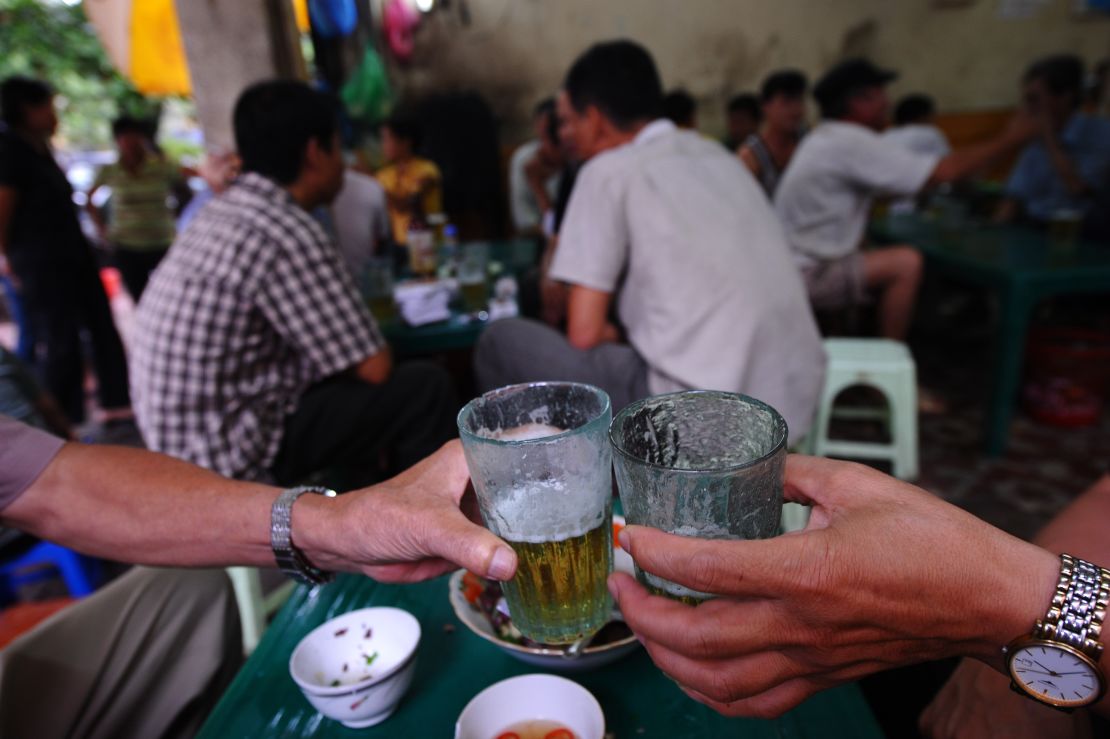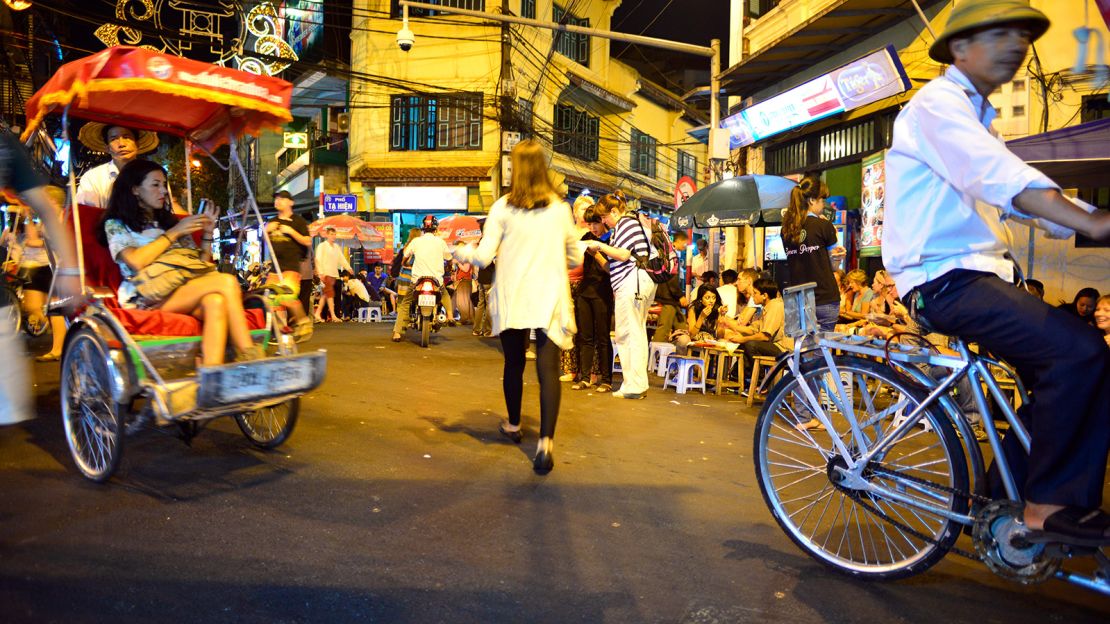As soon as the sun sets in Hanoi, Vietnam, there’s only one place to be: the corner of Ta Hien and Luong Ngoc Quyen streets.
Known as “Beer Corner”, this famous intersection in the Old Quarter lures travelers and residents alike to socialize over ice-cold bia hoi (light Vietnamese draft beer) atop tiny plastic stools.
A visit to Beer Corner isn’t just about enjoying a few brews – it’s also a window into the history of the city.
“If you really want to get up close and personal with the culture of a new city, in particular the culture of the local people, you need to stroll the sidewalks, sit on a stool and have a nice cold beer,” Brett MacDouall, co-founder of Hanoi Beer Tour, tells CNN Travel.
“And that’s what I love about Ta Hien Street.”
Bonding over beer

It’s on Ta Hien Street where MacDouall and co-founder Tan Vu met for the first time in 2005.
While chatting over beer, the two men discovered their fathers both fought in the Vietnam War, albeit on opposing sides.
“So here were two boys, both born in 1974 who grew up in the 1980s,” says MacDouall. “I suppose you could say, ideologically, we were very opposed.”
“But the first time we sat down over a cold beer and spoke to one another, we realized that our family values were very similar and have become the best of friends.”
Today, the two men aren’t just best buds – they’re also business partners, traipsing around the city with travelers to explore and share the city’s stories of beer.
Bia hoi basics

The first brewery in Hanoi opened in the 1890s, when the French controlled the city.
“The French brought the beer drinking culture to Vietnam,” says MacDouall. “Before that, [people drank] rice wine.”
After the Hanoi beer brewing factory was set up, beer culture caught on quickly.
Today, Vietnam is one Asia’s biggest beer-drinking nations, consuming 3.8 billion liters a year in 2016, according to Ministry of Industry and Trade.
“It evolved through workers [who enjoyed beer] after a hard day’s work,” says MacDouall. “It was also curiosity – people wanted to see what Westerners were drinking.”
At the time, however, the beer was expensive, marketed to the city’s upper crust.
It wasn’t until the late 1950s that bia hoi was introduced as an affordable options for everyday citizens. A brewery opened on Ta Hien Street, selling the fresh lager at just a few cents a mug.
This local staple is a light and refreshing lager, with an alcohol content of less than 3%.
The idea? You can drink it for long sessions to cool off after working all day in Hanoi’s sweltering temperatures.
“Some will actually say it is ‘instant beer’ like instant noodles, since it is made quickly and sold quickly,” explains MacDouall.
“The alcohol content is low and that was because people wanted to consume it rapidly.”
Over the years, countless bars and restaurants have populated Ta Hien Street, bring with them swathes of tiny stools and metal tables that flank both sides of the sidewalk.
All new brews

Still today, bia hoi is relatively affordable when compared with international labels. A glass of the light lager could set you back anywhere from 15 to 40 US cents.
But that’s slowly changing.
“For local owners, selling bia hoi doesn’t create enough money to sustain the business,” says MacDouall.
“So they would rather sell bottled beer and focus on food. But if you still want bia hoi, this is where you come and get it.”
And if you want something other than lager?
Enthusiasts can easily track down local microbreweries and craft beer bars that pour more creative concoctions.
Furbrew, on the banks of West Lake, for example, serves a ‘pho’ beer that mimics the flavors of the famous dish with a malty, herby, slightly spicy recipe.
“This is probably the greatest example of the evolution of Vietnam,” says MacDouall.
“Ta Hien started with bia hoi and moved to mass-produced bottled beers, and now you have an exploding craft beer scene.”



















